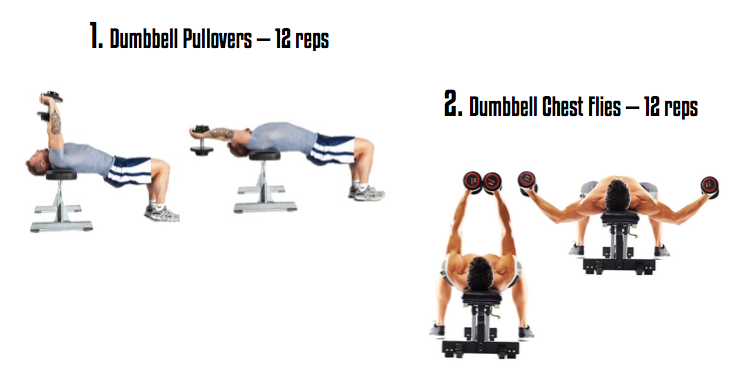Q. I have been training for a couple of years and seen good progress, with decent gains in strength and muscle size. My goal is increased muscle size, and my body has grown as a whole over the past two years since beginning my training. The only lagging body part seems to be my chest, which is flat, especially at the top, and I find it hard to target my chest with bench pressing which seems to give my arms more of a workout. I am looking for a chest routine I can follow which may give me the fullness and density to the chest.
A. The main bulk of the chest is composed of the Pectoralis Major, the muscle often referred to as the “pecs”. The muscle fans from its insertion point near the shoulder out to the origin attachments; the sternum, ribs and clavicle. The muscle is made up of two heads; the clavicular head (upper region of the chest), and the sternal head (middle and lower region of the chest).
The chest is naturally a relatively flat muscle, and we must also remember that body shapes may differ from person to person. That said, many beginners will notice their outer chest (near to the insertion point) growing and becoming thicker before the inner, lower and upper chest, for the simple fact all the muscle fibres are bundled closer together in this region. A so called “lagging” upper and middle chest is therefore common amongst those who have not trained persistently for a number of years and have notable development.
A chest routine would usually consist of exercises which target the muscle from a variety of angles. Compound chest exercises, such as the bench pressing variations and dips, will commonly be implemented, supplemented with more isolation exercises, such as the fly variations.
The compound chest exercises will recruit the triceps and shoulder muscles during the lift, and therefore it is important to shift the majority of stress onto the chest fibres opposed to the secondary muscle groups. This is achieved by ensuring the correct form is followed. Pinching the shoulder blades together and focusing on the contraction of the chest during the exercise should go some way to maximising the chest recruitment. It can take some time to work on the “mind-muscle connection”, but once this connection is built and reinforced it can become easier to focus on muscle contractions during exercises.
Another tool to use to minimise secondary muscle involvement is pre-exhausting. This involves performing an isolation exercise at the start of the routine, and following it up with the compound exercise(s). The desired effect is for the target muscle (the chest in this case) to become tired prior to the compound exercise(s). When the compound exercise is executed the target muscle will be more tired than the secondary muscles, and therefore likely fail before the other muscle groups. For a chest routine this would involve a chest fly being performed at the start of the routine, resulting in the chest becoming isolated and stressed. The next exercise may be the chest dip, which recruits the triceps and the shoulders, as well as the chest, so the chest will hopefully fail on the exercise before the triceps and shoulders.
Muscle growth is also determined by much more than exercise choice. Take a look at the following article for information regarding repetition ranges for muscle growth – reps for muscle hypertrophy (growth). Dietary intake should also be optimised for your bodybuilding goals.
Taking into consideration the above, the following chest routine may be wise for this situation:
Cable flys – 8-12 reps x 4 sets
Barbell bench press 8-12 reps x 3 sets
Incline dumbbell bench press 8-12 reps x 3 sets
Chest dips 8-12 reps x 3 sets
End with chest stretches

